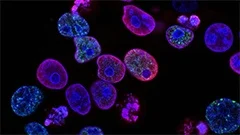Introduction
The nervous system is a complex and intricate network of specialized cells called neurons, which are responsible for the integration, processing, and transmission of information throughout the body. This comprehensive and hierarchically organized system enables the coordination of various physiological functions, including perception, behavior, movement, and homeostasis. The primary goal of this course is to provide a thorough examination of the anatomy, function, and mechanisms underlying the operation of the nervous system in humans.
Historical Background
The study of the nervous system dates back thousands of years, with early observations being made by scholars such as Aristotle and Galen. However, significant advancements were made during the 17th and 18th centuries with the development of microscopy by Antoni van Leeuwenhoek and the discovery of the nerve cell by Jan Swammerdam. The modern understanding of the nervous system was furthered in the 19th century by the works of Camillo Golgi, Santiago Ramón y Cajal, and Charles Sherrington.
Anatomical Overview
The nervous system is divided into two main parts: the central nervous system (CNS) and the peripheral nervous system (PNS). The CNS consists of the brain and spinal cord, while the PNS includes all nerves that connect the CNS to other parts of the body. Within each of these divisions, there are further subdivisions based on their function and anatomical location.
Central Nervous System (CNS)
Brain
The brain is a soft, flexible organ located within the skull. It can be divided into three primary regions: the cerebrum, the cerebellum, and the brainstem. Each region performs distinct functions that contribute to various aspects of behavior, cognition, and physiology.
Cerebrum
The largest portion of the brain, the cerebrum, is responsible for higher cognitive functions such as thinking, learning, memory, and consciousness. It can be further divided into left and right hemispheres, which are specialized for different tasks. The left hemisphere typically controls language and analytical abilities, while the right hemisphere handles spatial perception and creativity.
Cortex
The cortex is the outer layer of the cerebrum, responsible for sensory perception, motor control, and higher cognitive functions. It can be further subdivided into four lobes: frontal, parietal, temporal, and occipital. Each lobe has specific functional areas that contribute to various aspects of cognition and behavior.
White Matter
The white matter is composed of myelinated nerve fibers that connect different regions of the brain and allow for efficient communication between them. It appears white due to the presence of myelin, a fatty substance that insulates and protects these fibers.
Cerebellum
Located below the cerebrum, the cerebellum is responsible for motor coordination, balance, and fine-tuning movements. It receives input from various sensory systems and sends output to the motor cortex to adjust movements as needed.
Brainstem
The brainstem connects the cerebrum to the spinal cord and serves as a relay center for information traveling between the two regions. It consists of three parts: the midbrain, pons, and medulla oblongata. The brainstem is involved in several essential functions, including respiration, cardiovascular regulation, and sensory integration.
Spinal Cord
The spinal cord extends from the base of the brain through the vertebrae of the spine. It serves as a conduit for information traveling between the CNS and the PNS. The spinal cord is organized into 31 segments, each containing sensory (afferent) and motor (efferent) neurons that connect to specific regions of the body.
Peripheral Nervous System (PNS)
The PNS consists of all nerves that leave the CNS and connect to other parts of the body. It can be further divided into two divisions: the somatic nervous system and the autonomic nervous system.
Somatic Nervous System
The somatic nervous system is responsible for the control of voluntary movements and sensory perception related to touch, pain, and temperature. It consists of afferent neurons that carry sensory information from the body to the CNS and efferent neurons that transmit motor signals from the CNS to muscles and glands.
Autonomic Nervous System
The autonomic nervous system (ANS) regulates the function of visceral organs, such as the heart, lungs, stomach, and glands. It is further divided into two subdivisions: the sympathetic nervous system and the parasympathetic nervous system. The ANS maintains homeostasis by adjusting organ function in response to changes in the internal and external environment.
Neurons
Neurons are the primary cells of the nervous system, specialized for the integration, processing, and transmission of information. They have unique morphological and functional characteristics that allow them to perform their roles effectively.
Structure of a Neuron
A neuron consists of three main parts: the cell body, dendrites, and axon. The cell body contains the nucleus and other organelles necessary for metabolism, while dendrites receive incoming signals from other neurons. The axon is a long, slender extension that transmits electrical signals away from the cell body to other neurons or muscles.
Neurotransmission
Neuronal communication relies on the release and uptake of neurotransmitters, chemical messengers that facilitate the transmission of information between neurons. There are several types of neurotransmitters, including glutamate, GABA, serotonin, dopamine, and acetylcholine, each with specific roles in regulating various physiological functions.
Synapses
Synapses are specialized junctions between neurons where neurotransmission occurs. There are two types of synapses: chemical synapses and electrical synapses. Chemical synapses involve the release of neurotransmitters from the presynaptic neuron, which diffuse across a narrow gap (synaptic cleft) to bind receptors on the postsynaptic neuron. Electrical synapses, in contrast, allow for the direct passage of electrical signals between adjacent neurons via gap junctions.
Summary
In summary, the nervous system is a complex network of specialized cells called neurons that enable the integration, processing, and transmission of information throughout the body. The nervous system consists of the central nervous system (CNS), which includes the brain and spinal cord, and the peripheral nervous system (PNS), which connects the CNS to other parts of the body. Neurons have unique morphological and functional characteristics that allow them to perform their roles effectively, including neurotransmission and synaptic connections. Understanding the structure, function, and mechanisms underlying the operation of the nervous system is essential for maintaining health and treating neurological disorders.
MCQ: Test your knowledge!
Do you think you know everything about this course? Don't fall into the traps, train with MCQs! eBiologie has hundreds of questions to help you master this subject.
These courses might interest you
Create a free account to receive courses, MCQs, and advice to succeed in your studies!
eBiologie offers several eBooks containing MCQ series (5 booklets available free for each subscriber).



